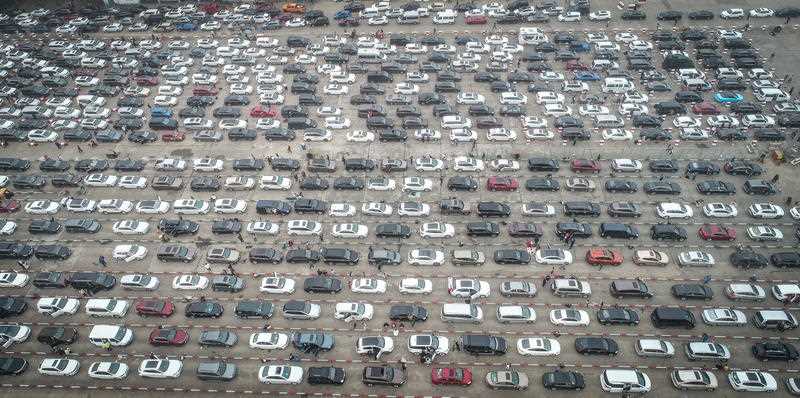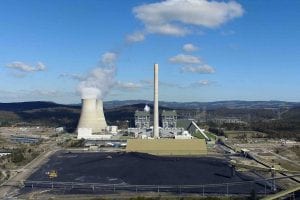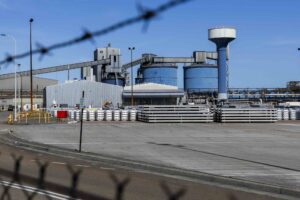Big Oil is finally contemplating the unthinkable, and until recently what was also unimaginable for them.
What if every car solar across the globe was an electric vehicle? What would that do to their trillion-dollar business model?
Well, they’ve looked at it. They’ve crunched the numbers. But they are not telling.
At least that is the sense you get BP’s latest Energy Outlook, now a major annual event that gives an insight into how quickly Big Oil is prepared to concede that the energy transition will occur.
Because of who they are, and what’s at stake, you can reliably assume that the predicted transition would never be too quick to scare off their investors. And that holds true in this latest edition.
Still, the latest BP Energy Outlook ponders this very question: What if – in 2040 – internal combustion engines were banned across the world and every car was electric?
It’s a scenario that is a decade late from some analysts, such as Stanford University’s Tony Seba, but the fact that it is being considered at all tells you why BP is already starting to roll out EV charging stations across its petrol station network in the UK.
What did BP find with a zero-ICE (internal combustion engine) scenario? Well, to the relief of their shareholders, not much.
BP says that oil demand would be affected, and total oil consumption would fall by more than half to 8 million barrels of oil per day from 18mb/d – a loss of only 10 per cent of total worldwide oil demand.
But here’s the thing. BP only considered the impact up until the ban, which is why that green line in that top graph doesn’t go down much.
It is hanging on to the fact that if a ban is imposed in 2040, then up until that point, at least one third of the fleet would still be petrol or diesel.
And the impact would surely be felt after the ban. At least they conceded that there would be such a thing as peak oil demand, even if it is seen to arrive two decades later than most others.
But here’s another important point. BP also did not consider was the electrification of other transport either, some of which, like trucks, – hello Tesla Semi – is likely to occur much more quickly because the economics, particularly for fleet operators, are so overwhelming.
Like so many of these scenarios, from other Big Oil companies, to major coal corporations and the International Energy Agency, these forecasts are designed so as not to frighten the horses.

BP’s base scenario, now called Evolving Transition (ET) is – like so many from interests that represent or have close ties to the fossil fuels industry – based around the assumption that the world does little to reduce emissions.
Indeed, in BP’s ET scenario, overall emissions rise 10 per cent by 2040. And for that reason, they are unacceptable.
BP entertains a couple of other scenarios, an FT (fast transition) and an EFT (extra fast transition). What is fascinating, however, is the changes that BP is making to its forecasts.
Over the last few years, it has significantly upgraded its estimates for EVs, for wind and solar, and downgraded its assumptions on oil (only slightly) and coal (quite a lot).
It even concedes Stanford Uni’s Seba’s projections that much of the change in the future of road transportation would be driven by autonomous driving and shared vehicles.
This is Seba’s central thesis, see our story Death spiral for cars: By 2030, you probably won’t own one. His suggestion that most people may not own their own car horrified Trump’s America, you can read the comments to the article).
BP sees the trend (see the graph above), but expects it (read, wants it) to be slower than suggested by Seba.
But it’s interesting that BP accepts kilometres travelled by EVs will be 30 per cent, more than double the share of actual EVs, because of the greater use of shared autonomous driving. That looks like being a game changer.
Carbon Brief did an interesting analysis, pointing out that the main scenario in BP Energy Outlook shows renewables rising four-fold to 2,000 million tonnes of oil equivalent (Mtoe) by 2035. This is an upwards revision of around 400Mtoe compared to last year’s main forecast.
The projections also show, for the first time, global oil demand peaking by 2040. And it projects coal will peak before 2030, an even earlier projection than it gave last year. These graphs – above and below – shows how the BP estimates have evolved since 2011. The red line is the latest.













